How to make sweet-scented osmanthus latte Australian white Dirty coffee? Is it good to make coffee with sweet-scented osmanthus?
I would like to ask: who does not want to have a cup of coffee with the characteristics of the season in this sentimental autumn to feel the cool beauty of autumn?
You all want to drink, right? I really can't help it. Today, Qianjie will take out the treasured sweet-scented osmanthus and use it to teach everyone to make coffee with autumn flavor.
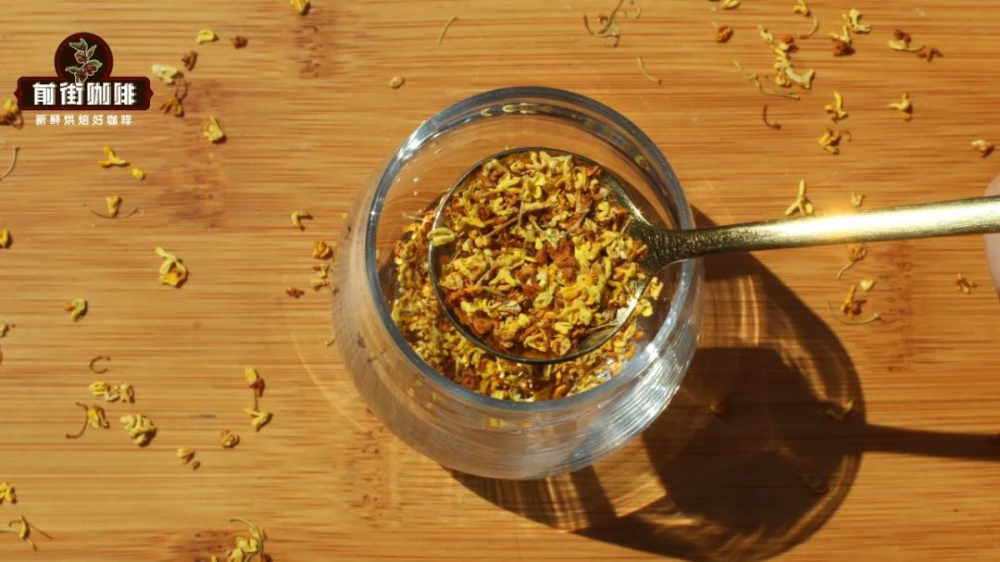
Why choose sweet-scented osmanthus? The fragrance of sweet-scented osmanthus is rich, strong but not strong, and it also contains fragrant substances similar to sweet-scented osmanthus in coffee beans, so adding sweet-scented osmanthus to coffee is not only not inconsistent, but also very likable. The most important thing is that when we mention sweet-scented osmanthus, we can naturally think of autumn, and it is not too much to say that it is synonymous with autumn.
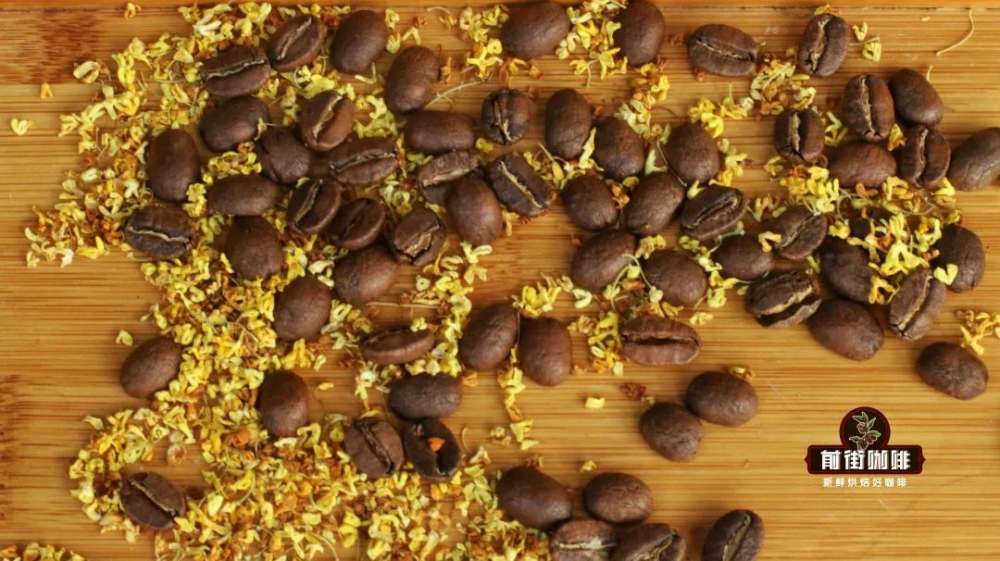
Qianjie Tip: freshly picked sweet-scented osmanthus can not be eaten directly, it needs to go through a certain treatment process before it can become edible sweet-scented osmanthus. If you are as lazy as Qianjie, you can buy dried sweet-scented osmanthus online. Not only the price is cheap, but also has the security guarantee ~ the sweet-scented osmanthus concentrate, as the name implies, is to bring the fragrance of sweet-scented osmanthus into the concentration. However, if you want to make Espresso not only retain the mellow of coffee, but also just extract the fragrance of sweet-scented osmanthus, there is also a knack in production. Some friends may think of soaking sweet-scented osmanthus in concentrated, although the fragrance of sweet-scented osmanthus can be released, but it will take some time, the concentrated oil will dissipate and a lot of flavor will be lost. So, instead of worrying about the loss of the essence of Espresso, Qianjie prefers to make sweet-scented osmanthus a part of the extraction process, along with coffee powder.
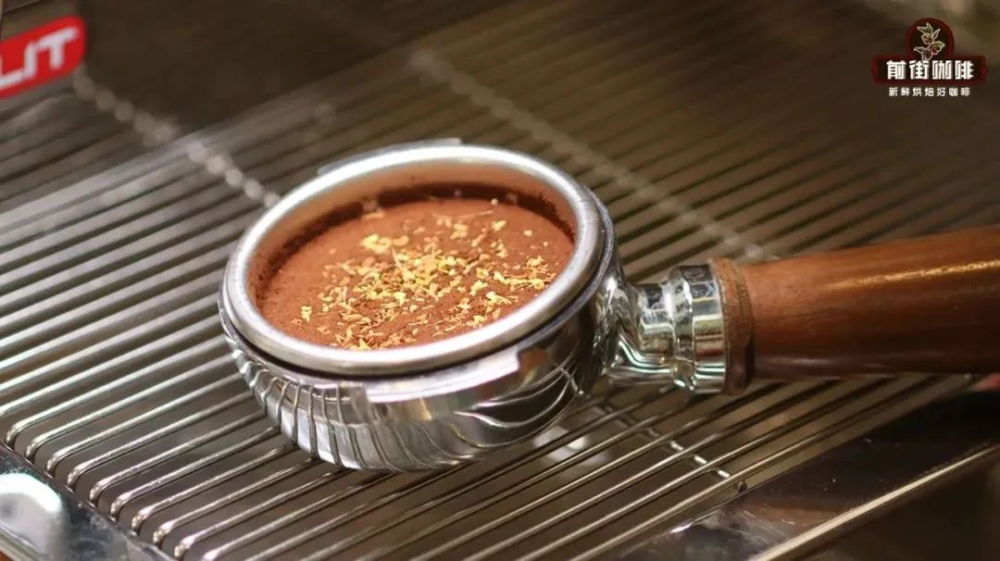
Secondly, considering the obvious density and volume difference between sweet-scented osmanthus and Italian ground coffee powder, the mixed filling and re-extraction of dried sweet-scented osmanthus granules and coffee powder will increase the risk of channel effect in pressed powder. Hot water will drill through places with low density (loose), showing a sudden increase in the flow rate in the middle and back, accompanied by a slight spray phenomenon. So we can use a safer method to extract sweet-scented osmanthus and concentrate: put the sweet-scented osmanthus on the top / bottom of pressed powder.
Qianjie once combined with warm sun to put sweet-scented osmanthus on the surface and at the bottom respectively: spread the sweet-scented osmanthus (20g coffee powder corresponding to 0.3g-0.5g sweet-scented osmanthus) in a powder bowl and flatten it; the other is to pour the coffee powder into the powder bowl and pat flat. Sweet-scented osmanthus is sprinkled on pressed powder and compacted.
The two extraction processes are relatively stable, the time is not much different from the conventional parameters, there is no similar channel effect mentioned above, and Espresso can smell the flowers. When these two parts are concentrated and made into a hot American style, the coffee extracted with sweet-scented osmanthus at the bottom tastes the best, with a hint of sweet-scented osmanthus and good taste, in addition to the wine and acidity of the beans themselves.

Osmanthus latte
Like latte, you can't concentrate sweet-scented osmanthus and add milk directly, because the milk will cover the fragrance of sweet-scented osmanthus, so we need an extra auxiliary-"sweet-scented osmanthus syrup". Add 15g of sweet-scented osmanthus syrup to concentrate (conventional concentration, 20g beans extract 40g), make lattes (220g milk), and finally sprinkle some dried sweet-scented osmanthus on the surface, which can be used as embellishment and give you a hint of fragrance at the same time.
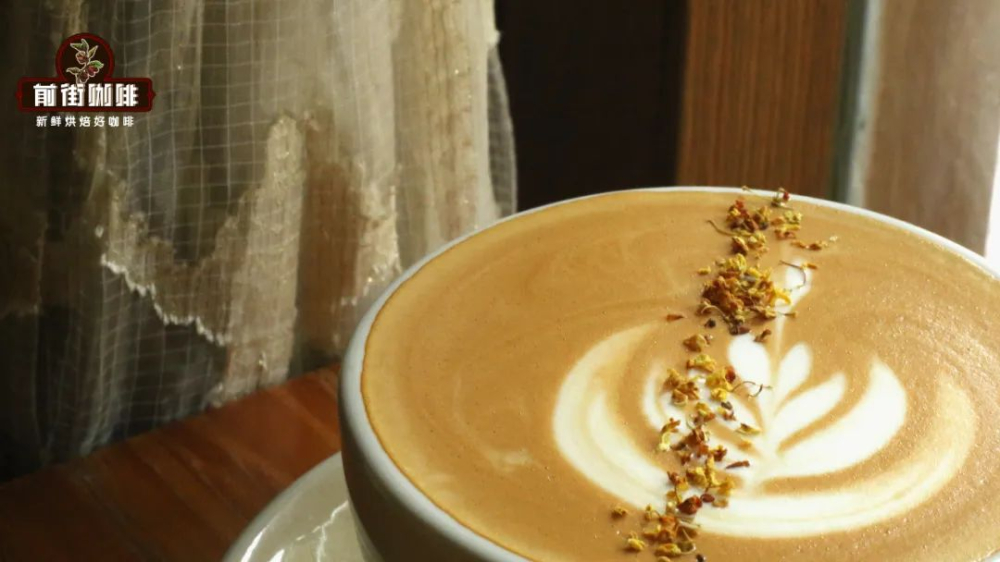
Of course, if you like hot drinks with a stronger coffee flavor, you can also make Australian white and cappuccino. Compared with latte, Australian white and Cabo, the cup size is relatively small, so the use of syrup can be reduced appropriately. Take 10g of sweet-scented osmanthus syrup mixed with conventional concentration (20g coffee beans, extract 40g coffee liquid), then use 180g milk to mix and draw flowers, and finally sprinkle dried sweet-scented osmanthus on the surface for embellishment and fragrance!
Osmanthus fragrans Drity
Although it is in the lower temperature season, it still can not resist the love of Drity enthusiasts. On how to make sweet-scented osmanthus Drity, there are many detailed tutorials online to refer to, here Qianjie to introduce you to one of them.
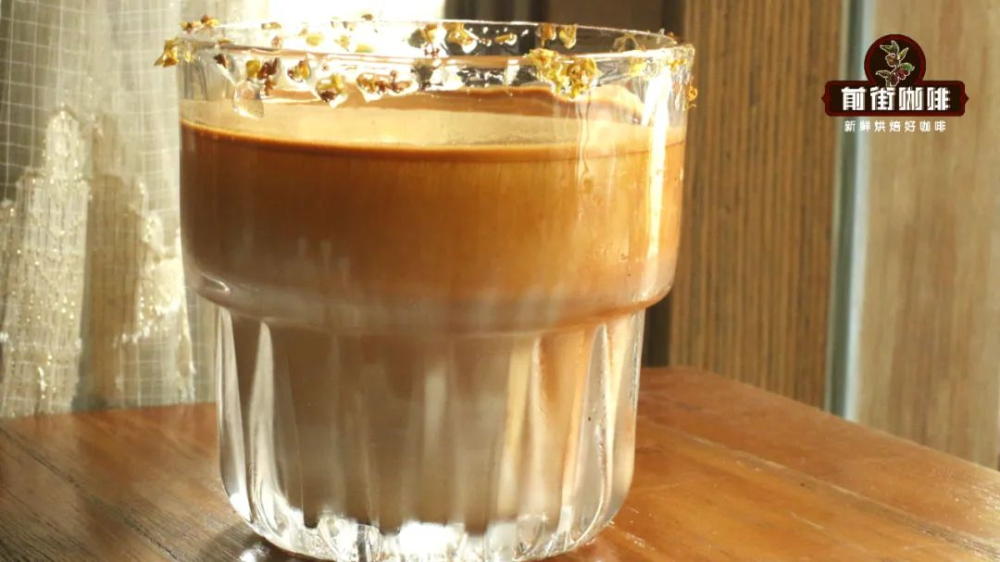
First choose a beautiful glass, turn it upside down and let the sweet-scented osmanthus syrup stick around the mouth of the cup, then pour in 170g ice milk and extract a portion of sweet-scented osmanthus concentrate (20g coffee beans, 0.3-0.5g sweet-scented osmanthus, extract 40g coffee liquid) on the surface. The sweet-scented osmanthus Drity is not only photogenic, but can smell elegant flowers before tasting, and the addition of sweet-scented osmanthus nectar makes the "autumn flavor" of the whole cup of coffee more solid.
Here we are, let's make a whole cup of sweet-scented osmanthus by hand.
Considering that sweet-scented osmanthus has a strong sweet smell, which is suitable for coffee beans with lighter flavor, Panamanian water washing butterfly is chosen here. Compared with Italian style, hand flushing has an extraction time of about 2 minutes. Under the repeated washing of hot water, sweet-scented osmanthus can release the fragrance more fully, so there is no need to add too much, as in Qianjie, the visible area of the powder layer can be slightly filled.
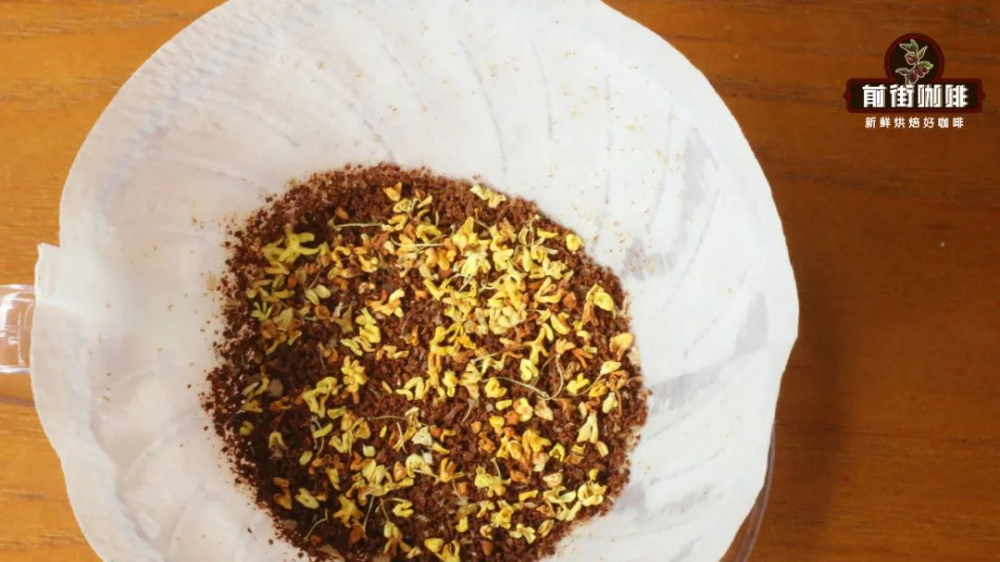
Cooking parameters: 15g powder, powder / water ratio 1:15, grinding degree: EK43s scale 10 (China 20 standard screening rate 80%), water temperature: 91 ℃, filter cup: V60, cooking technique: three-stage.
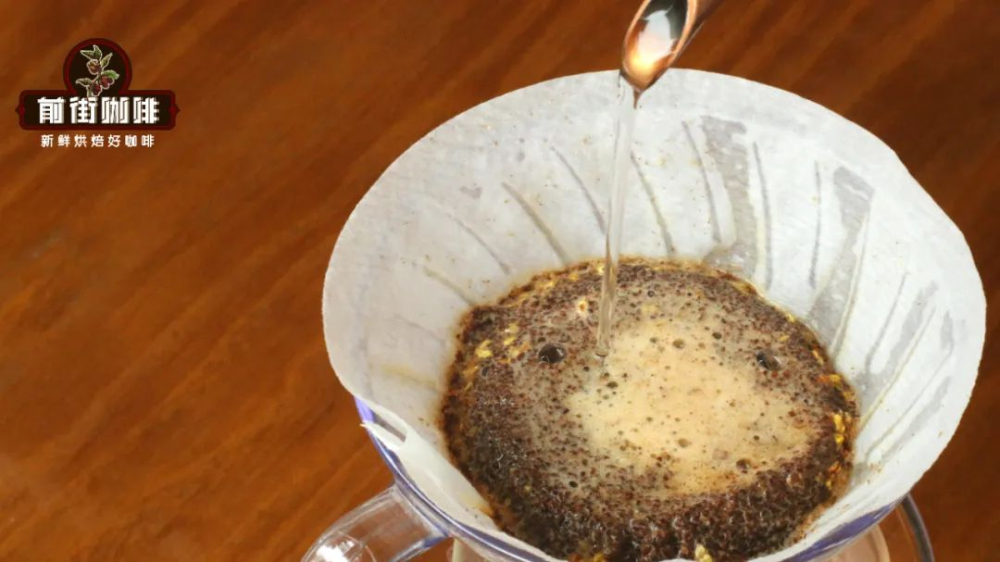
Sweet-scented osmanthus + butterfly hand flavor: you can smell warm sweet-scented osmanthus before tasting it. The entrance is bright citrus coffee with sour fruit, peach and honey sweetness, and the sweetness of oolong tea. After swallowing, there is still a light and elegant fragrance of sweet-scented osmanthus in the mouth, which is very comfortable.
-END-
Front Street Cafe
No. 10 Baoqian street, Yandun road, Dongshankou, Yuexiu district, Guangzhou, Guangdong province

Read 703
Important Notice :
前街咖啡 FrontStreet Coffee has moved to new addredd:
FrontStreet Coffee Address: 315,Donghua East Road,GuangZhou
Tel:020 38364473
- Prev

How can I flush out the coffee grease? How to use flannel to make good coffee?
Coffee oil is essentially an insoluble substance in coffee beans wrapped in carbon dioxide, which can enhance the experience of coffee, such as making the taste richer, mellow, and prolonging the duration of the aftertaste. In individual coffee, fat is also very common, but the difference is more or less. If you have a friend, ask.
- Next

What if the deep-baked coffee is too thin? How to flush out the alcohol thickness of hand-brewed coffee?
In the description article shared with you yesterday, the paragraph "mellow thickness" aroused a response from a large number of coffee friends, and a friend asked him backstage that the deep-roasted coffee tasted thin. Is there any way to improve the mellow thickness of the coffee? Repopularize the science: alcohol thickness means that the amount of coffee liquid in the mouth is light.
Related
- Beginners will see the "Coffee pull flower" guide!
- What is the difference between ice blog purified milk and ordinary milk coffee?
- Why is the Philippines the largest producer of crops in Liberia?
- For coffee extraction, should the fine powder be retained?
- How does extracted espresso fill pressed powder? How much strength does it take to press the powder?
- How to make jasmine cold extract coffee? Is the jasmine + latte good?
- Will this little toy really make the coffee taste better? How does Lily Drip affect coffee extraction?
- Will the action of slapping the filter cup also affect coffee extraction?
- What's the difference between powder-to-water ratio and powder-to-liquid ratio?
- What is the Ethiopian local species? What does it have to do with Heirloom native species?

